Monthly Archives: December 2016
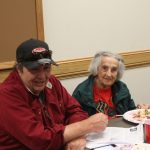
 With each passing year, I find myself looking forward more and more to the Byer Family Christmas Party. Sadly, I think that part of the reason is that as time passes, we seem to lose more and more of my aunts and uncles. This year found us with only four aunts and only one uncle at the party. There are other uncles who are still alive, but that aren’t really able to come out for these events any more. It makes each time we get together that much more precious. I always feel sorry for those who didn’t make it to the party, because we always have such a nice time, and we are a family of excellent cooks, so the food is fabulous. And it is a way to keep those who have gone to Heaven just a little closer to the family. Nevertheless, the sadness over missing those who have left us persists, and grows with each new passing.
With each passing year, I find myself looking forward more and more to the Byer Family Christmas Party. Sadly, I think that part of the reason is that as time passes, we seem to lose more and more of my aunts and uncles. This year found us with only four aunts and only one uncle at the party. There are other uncles who are still alive, but that aren’t really able to come out for these events any more. It makes each time we get together that much more precious. I always feel sorry for those who didn’t make it to the party, because we always have such a nice time, and we are a family of excellent cooks, so the food is fabulous. And it is a way to keep those who have gone to Heaven just a little closer to the family. Nevertheless, the sadness over missing those who have left us persists, and grows with each new passing.
I think one reason that our grandparents wanted their children to continue the annual Christmas party and annual picnic was so that we would all get to know each other better. As the new generations come along. It would be so easy to lose touch with each other. That would be so sad, because little kids are usually instant 

 friends, and that makes it extra special to watch. The kids had a sparkle in their eyes, and smiles on their faces. They were so excited to have new friends to play with and lots of room to run around, with no one to get upset at them. For kids, Christmas is always a special time of year, and it’s really hard to hold back the excitement. I love watching them bounce around the room. I could say that they ran around the room, but that wouldn’t be right exactly, because they really did bounce with excitement, and after all, it’s all about the kids right.
friends, and that makes it extra special to watch. The kids had a sparkle in their eyes, and smiles on their faces. They were so excited to have new friends to play with and lots of room to run around, with no one to get upset at them. For kids, Christmas is always a special time of year, and it’s really hard to hold back the excitement. I love watching them bounce around the room. I could say that they ran around the room, but that wouldn’t be right exactly, because they really did bounce with excitement, and after all, it’s all about the kids right.
My grandparents were wise people. They had a vision for their kids and grandkids…for all of the generations that would follow them. They knew how easy it is to get busy in life, and to lose touch with family. It happens 
 in so many families, and they didn’t want that for their family. Very wise people indeed. They wanted their kids not only to know their nieces and nephews, but also their grand nieces and nephews, and great grand nieces and nephews, for as long as they lived. What a precious gift that request turned out to be. It was not a burden to be carried or work to be done…it was a gift, and one I am thankful for every single year. It’s a time for family and reconnecting. While we miss all those who are gone now, I know that they would be proud of us for continuing this tradition. We love you all.
in so many families, and they didn’t want that for their family. Very wise people indeed. They wanted their kids not only to know their nieces and nephews, but also their grand nieces and nephews, and great grand nieces and nephews, for as long as they lived. What a precious gift that request turned out to be. It was not a burden to be carried or work to be done…it was a gift, and one I am thankful for every single year. It’s a time for family and reconnecting. While we miss all those who are gone now, I know that they would be proud of us for continuing this tradition. We love you all.

 My nephew, Barry Schulenberg, and his wife, Kelli have been doing some remodeling on their bathroom and their home outside of Casper, Wyoming. Barry has a knack for carpentry, and that reminds me of the little boy that was Barry, helping his grandpa, my father-in-law, Walt Schulenberg build the family home north of Casper. It seems like so many years ago, and yet in my memory files, I can see it so clearly. In those days, Barry wanted to do anything his grandpa was doing…so much so, in fact, that Barry had decided that he didn’t need to go to school. He was just going to go to work with his grandpa. I can’t say exactly how much Barry learned about carpentry from his grandpa in those days, but I think he took something away from that experience, even as a little two year old boy. I think he found that he liked to build things, but more than that, it built a bond between grandfather and grandson that would last a lifetime.
My nephew, Barry Schulenberg, and his wife, Kelli have been doing some remodeling on their bathroom and their home outside of Casper, Wyoming. Barry has a knack for carpentry, and that reminds me of the little boy that was Barry, helping his grandpa, my father-in-law, Walt Schulenberg build the family home north of Casper. It seems like so many years ago, and yet in my memory files, I can see it so clearly. In those days, Barry wanted to do anything his grandpa was doing…so much so, in fact, that Barry had decided that he didn’t need to go to school. He was just going to go to work with his grandpa. I can’t say exactly how much Barry learned about carpentry from his grandpa in those days, but I think he took something away from that experience, even as a little two year old boy. I think he found that he liked to build things, but more than that, it built a bond between grandfather and grandson that would last a lifetime.
Over the years, Barry helped his grandfather do anything he was doing. From splitting wood to working on cars, the two of them were almost inseparable, except for the inevitable job/school times that each had to go to. Barry lived for the time when his grandpa would be home from work and they could go work outside. I’m not sure if my father-in-law felt worn out or not, but if he did, he rarely showed it to Barry. They were best buddies and that was all that mattered. The three granddaughters that my father-in-law had then, were his little princesses, and were treated as such, but Barry was his working buddy, and that was just the way it was. I think the girls were ok with that too, because carpentry and cars really weren’t their idea of fun anyway.
I don’t know if Barry realized how special his relationship with his grandpa was, but I really hope he did or does now, because it was special. Not every little boy gets to spend the time with their grandfather that Barry did. That was a blessing beyond blessings for both of them, and it was special to watch too. My father-in-law has 
 been gone now for over three and a half years now. I have to wonder if Barry misses his grandpa as he is working on the current project he has set himself to now. It’s not that Barry can’t do the work himself and with Kelli’s help, but I have to wonder if he doesn’t hear the echo of his grandpa’s voice guiding him through the steps to remodeling the bathroom. His grandpa really knew what he was doing, and to top it off, Barry looks like his grandpa too. No wonder they got along so well. They were two of a kind. Today is Barry’s birthday. Happy birthday Barry!! Have a great day!! We love you!!
been gone now for over three and a half years now. I have to wonder if Barry misses his grandpa as he is working on the current project he has set himself to now. It’s not that Barry can’t do the work himself and with Kelli’s help, but I have to wonder if he doesn’t hear the echo of his grandpa’s voice guiding him through the steps to remodeling the bathroom. His grandpa really knew what he was doing, and to top it off, Barry looks like his grandpa too. No wonder they got along so well. They were two of a kind. Today is Barry’s birthday. Happy birthday Barry!! Have a great day!! We love you!!
 When Alfred Bernhard Nobel, the Swedish inventor of dynamite and other high explosives, died on December 10, 1896, he left a request in his will, that the bulk of his vast fortune be placed in a fund to finance an award to be “annually distributed in the form of prizes to those who, during the preceding year, shall have conferred the greatest benefit on mankind.” He did not state why he wanted to make such a bequest, but it was believed that he did so out of moral regret over the increasingly lethal uses of his inventions in war. The first Nobel Prizes are awarded in Stockholm, Sweden, in the fields of physics, chemistry, medicine, literature, and peace. The ceremony came on the fifth anniversary of Nobel’s death.
When Alfred Bernhard Nobel, the Swedish inventor of dynamite and other high explosives, died on December 10, 1896, he left a request in his will, that the bulk of his vast fortune be placed in a fund to finance an award to be “annually distributed in the form of prizes to those who, during the preceding year, shall have conferred the greatest benefit on mankind.” He did not state why he wanted to make such a bequest, but it was believed that he did so out of moral regret over the increasingly lethal uses of his inventions in war. The first Nobel Prizes are awarded in Stockholm, Sweden, in the fields of physics, chemistry, medicine, literature, and peace. The ceremony came on the fifth anniversary of Nobel’s death.
Educated in private schools in Saint Petersburg, Russia, Nobel excelled in Swedish, Russian, French, English and German. His primary interests were in English literature and poetry as well as in chemistry and physics. His interest in literature and poetry, was upsetting to his father, who considered him an introvert. He wanted his sons to become engineers, and to join his enterprise. In an effort to redirect Alfred’s interests, his father sent him abroad for further training in chemical engineering. During a two year period Alfred Nobel visited Sweden, Germany, France and the United States. In Paris, the city he came to like best, he worked in the private laboratory of Professor T J Pelouze, a famous chemist. There he met the young Italian chemist Ascanio Sobrero who, three years earlier, had invented nitroglycerine, a highly explosive liquid. Alfred Nobel proved himself to be a brilliant chemist. When his father’s business faltered after the end of the Crimean War, Nobel returned to Sweden and set up a laboratory to experiment with explosives. In 1863, he invented a way to control the detonation of nitroglycerin, which was previously regarded as too dangerous for use. Two years later, Nobel invented the blasting cap, an improved detonator that brought about the modern use of high explosives. Previously, the most dependable explosive was black powder, a form of gunpowder. Nitroglycerin remained dangerous, however, and in 1864 Nobel’s nitroglycerin factory blew up, killing his younger brother and several other people. Searching for a safer explosive, Nobel discovered in 1867 that the combination of nitroglycerin and a porous substance called Kieselguhr produced a highly explosive mixture that was much safer to handle and use. Nobel called his invention “dynamite,” for the Greek word dynamis, meaning “power.” Securing patents on dynamite, Nobel acquired a fortune as humanity put his invention to use in construction and warfare. Over his lifetime Alfred Nobel earned 355 patents.
All his work, left little time for a social life. At 43 years of age, feeling lonely and old, he placed an add for a woman who might become a suitable mate for him. The only one who came close to being the one, was Countess Bertha Kinsky, unfortunately she returned home and married Count Arthur von Suttner, but she and Nobel remained friends and kept writing letters to each other for decades. Over the years Bertha von Suttner became increasingly critical of the arms race. She wrote a famous book, Lay Down Your Arms and became a prominent figure in the peace movement. No doubt this influenced Alfred Nobel when he wrote his final will which was to include a Prize for persons or organizations who promoted peace. Several years after the death of Alfred Nobel, the Norwegian Parliament decided to award the 1905 Nobel Peace Prize to Bertha von Suttner.
The first Nobel Prizes were awarded on December 10, 1901, and subsequent prizes are awarded each year on  December 10, because it is the anniversary of Alfred Nobel’s death. It is the perfect day for the awards to be given. The Royal Swedish Academy of Sciences decides the prizes in physics, chemistry, and economic science. The Swedish Royal Caroline Medico-Surgical Institute determines the physiology or medicine award. The Swedish Academy chooses literature, and a committee elected by the Norwegian parliament awards the peace prize. In 2006, each Nobel Prize carried a cash prize of nearly $1,400,000 and recipients also received a gold medal, as is the tradition. Some notable winners have included Marie Curie, Theodore Roosevelt, Albert Einstein, George Bernard Shaw, Winston Churchill, Ernest Hemingway, Martin Luther King Jr, the Dalai Lama, Mikhail Gorbachev, and Nelson Mandela. All made Nobel efforts in their field.
December 10, because it is the anniversary of Alfred Nobel’s death. It is the perfect day for the awards to be given. The Royal Swedish Academy of Sciences decides the prizes in physics, chemistry, and economic science. The Swedish Royal Caroline Medico-Surgical Institute determines the physiology or medicine award. The Swedish Academy chooses literature, and a committee elected by the Norwegian parliament awards the peace prize. In 2006, each Nobel Prize carried a cash prize of nearly $1,400,000 and recipients also received a gold medal, as is the tradition. Some notable winners have included Marie Curie, Theodore Roosevelt, Albert Einstein, George Bernard Shaw, Winston Churchill, Ernest Hemingway, Martin Luther King Jr, the Dalai Lama, Mikhail Gorbachev, and Nelson Mandela. All made Nobel efforts in their field.
 Sometimes, there are events in history that end up tied to other events in history, in one way or another. On this day, December 9, 2003, Tehran, Iran was hit by unseasonably cold temperature, that led to the deaths of 40 people from hypothermia. It is very rare to see such large groups of people die in this way at the same time, but it does happen, as seen in Tehran. Their deaths occurred when their core body temperature fell to 77 degrees Fahrenheit. So, how does this have anything to do with history beyond 2003? Well, it actually does, and not in a good way.
Sometimes, there are events in history that end up tied to other events in history, in one way or another. On this day, December 9, 2003, Tehran, Iran was hit by unseasonably cold temperature, that led to the deaths of 40 people from hypothermia. It is very rare to see such large groups of people die in this way at the same time, but it does happen, as seen in Tehran. Their deaths occurred when their core body temperature fell to 77 degrees Fahrenheit. So, how does this have anything to do with history beyond 2003? Well, it actually does, and not in a good way.
Most of us, these days, know about hypothermia. In fact, the causes and the fixes are pretty well known, but what I didn’t know before, although maybe I should have, is that the information we have on hypothermia came from the horrible experiments that the Nazis performed on the prisoners at the Dachau concentration camp during World War II. These unethical medical experiments that were carried out during the Third Reich fell into three categories. The first category consists of experiments aimed at facilitating the survival of Axis military personnel. In Dachau, physicians from the German air force and from the German Experimental Institution for Aviation conducted high-altitude experiments, using a low-pressure chamber, to determine the maximum altitude from which crews of damaged aircraft could parachute to safety. Scientists there carried out so-called freezing experiments using prisoners to find an effective treatment for hypothermia. While the findings might have been a good thing, the way the experiments were carried out was horrendous. After these experiments, most people knew that if they were  outside in frigid temperatures, they could die of hypothermia. Nevertheless, there were a few miracle situations, such as the two year old girl in Canada in 1994, who survived after her core body temperature dropped to 57 degrees Fahrenheit when she wandered away from her home in Saskatchewan.
outside in frigid temperatures, they could die of hypothermia. Nevertheless, there were a few miracle situations, such as the two year old girl in Canada in 1994, who survived after her core body temperature dropped to 57 degrees Fahrenheit when she wandered away from her home in Saskatchewan.
The second category of experimentation involved developing and testing pharmaceuticals and treatment methods for injuries and illnesses which German military and occupation personnel encountered in the field. Apparently the Nazis felt free to find ways to save their soldiers lives, at the expense of their prisoners. At the German concentration camps of Sachsenhausen, Dachau, Natzweiler, Buchenwald, and Neuengamme, prisoners were subjected to immunization compounds for the prevention and treatment of contagious diseases, including malaria, typhus, tuberculosis, typhoid fever, yellow fever, and infectious hepatitis. The Ravensbrueck camp was the site of bone-grafting experiments and experiments to test the efficacy of newly developed sulfanilamide drugs. At Natzweiler and Sachsenhausen, scientists tested prisoners with phosgene and mustard gas in order to find possible antidotes. Their lives simply didn’t matter when it came to the experimentation.
The third category of medical experimentation sought to advance the racial and ideological principles of the Nazi worldview. The most infamous were the experiments of Josef Mengele at Auschwitz. Mengele conducted medical experiments on twins. He also directed serological experiments on Roma Gypsies, as did Werner 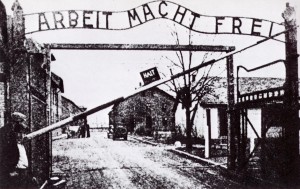 Fischer at Sachsenhausen, in order to determine how different “races” withstood various contagious diseases. The research of August Hirt at Strasbourg University also intended to establish “Jewish racial inferiority.” Other gruesome experiments meant to further Nazi racial goals were a series of sterilization experiments, undertaken primarily at Auschwitz and Ravensbrueck. There, scientists tested a number of methods in their effort to develop an efficient and inexpensive procedure for the mass sterilization of Jews, Roma Gypsies, and other groups that the Nazi leaders considered to be racially or genetically undesirable. It is difficult for me to even think about the cruelty that the Nazis inflicted on the Jews and Gypsies during those horrible years.
Fischer at Sachsenhausen, in order to determine how different “races” withstood various contagious diseases. The research of August Hirt at Strasbourg University also intended to establish “Jewish racial inferiority.” Other gruesome experiments meant to further Nazi racial goals were a series of sterilization experiments, undertaken primarily at Auschwitz and Ravensbrueck. There, scientists tested a number of methods in their effort to develop an efficient and inexpensive procedure for the mass sterilization of Jews, Roma Gypsies, and other groups that the Nazi leaders considered to be racially or genetically undesirable. It is difficult for me to even think about the cruelty that the Nazis inflicted on the Jews and Gypsies during those horrible years.

 Life is a series of changes, because nothing ever stays the same here on Earth…that’s just the way it is. Three months ago, my niece, Jessi Sawdon, and her husband Jason became parents for the first time, to Adelaide Ione…AKA Jessi’s mini me, although I’m told she looks a lot like her daddy too, but those eyes are all Jessi. Jessi and Jason are having the time of their lives with their precious little girl, and they are going to be such great parents. They are loving and fun, yet disciplined, and they love their baby girl so much. Those are the most important qualities in a parent anyway…right. Jessi has always been a joyful girl. In fact she and her siblings are all that way, and so Jessi grew up in a home filled with laughter, and so did Jason, so that is the type of home they have now. Nevertheless, Jessi has always had a soft side too. She is very gentle and loving, and her little Adelaide simply beams when her mommy is talking to her.
Life is a series of changes, because nothing ever stays the same here on Earth…that’s just the way it is. Three months ago, my niece, Jessi Sawdon, and her husband Jason became parents for the first time, to Adelaide Ione…AKA Jessi’s mini me, although I’m told she looks a lot like her daddy too, but those eyes are all Jessi. Jessi and Jason are having the time of their lives with their precious little girl, and they are going to be such great parents. They are loving and fun, yet disciplined, and they love their baby girl so much. Those are the most important qualities in a parent anyway…right. Jessi has always been a joyful girl. In fact she and her siblings are all that way, and so Jessi grew up in a home filled with laughter, and so did Jason, so that is the type of home they have now. Nevertheless, Jessi has always had a soft side too. She is very gentle and loving, and her little Adelaide simply beams when her mommy is talking to her.
The Bible says, “As you sow, so shall you reap.” When someone has a child, that verse tends to come to mind, because if the parent was a difficult child, they start wondering if their child will be too. With Jessi, who was for the most part, a pretty easy going child, that verse brings one thing to mind. When Jessi was a little two year old girl, her mother, my sister, Allyn Hadlock used to play games with Jessi. One of them was a playful way of saying, “no-no.” She would shake her finger at little Jessi and say, “Don’t you ever do that.” She would also tell her, “I’m the mom, you’re the baby.” Jessi knew that her mother wasn’t terribly serious, but when the tables turned, it was a little different. Once when Allyn was telling Jessi that she was the mom, Jessi argued that, no, she was the mom. As the “argument” progressed, my dinky little niece raised her arm up in the air toward her mom, pointed her finger down for whatever reason, and told her mom, “Don’t you ebber!!” Well, Allyn couldn’t have been mad are her if it had been a real argument, but I have to wonder if one of these days, a determined little Adelaide won’t tell her mom, “Don’t you ebber!!” Or maybe something similar anyway.


As the song goes, “Life’s about changing, nothing ever stays the same,” but when you think about it, maybe we wouldn’t really want it to, because if it did, we wouldn’t have some of those silly little moments that come from our children, and later, our grandchildren. Jessi and Jason’s lives are changing every day, and while I’m sure it will be a wild ride at times, it will also be an amazing one. I’m sure it will change again as more children come along too. Today is Jessi’s birthday. Happy birthday Jessi!! Have a great day!! We love you!!
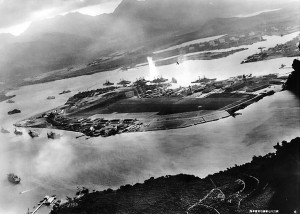
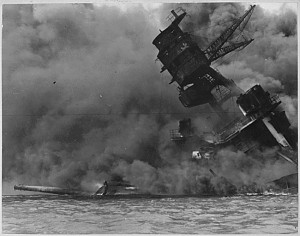 Whether people remember the date or not, I think that most people know that the attack on Pearl Harbor was what took the United States into World War II. Negotiations with Japan had broken down, and President Franklin Roosevelt and his advisors knew that in all probability, the Japanese would attack the United States. Still, nothing was done to increase security at key points, like the naval base at Pearl Harbor, Hawaii. This was especially an important base, because of it’s location. It was a place that early warning could have been given to the mainland, or where an attack could have been thwarted, but as often happens in government, the leaders don’t want to scare the nation, so they try to keep things from them…a plan the is fraught with folly. The best weapon a nation can possibly have is preparedness.
Whether people remember the date or not, I think that most people know that the attack on Pearl Harbor was what took the United States into World War II. Negotiations with Japan had broken down, and President Franklin Roosevelt and his advisors knew that in all probability, the Japanese would attack the United States. Still, nothing was done to increase security at key points, like the naval base at Pearl Harbor, Hawaii. This was especially an important base, because of it’s location. It was a place that early warning could have been given to the mainland, or where an attack could have been thwarted, but as often happens in government, the leaders don’t want to scare the nation, so they try to keep things from them…a plan the is fraught with folly. The best weapon a nation can possibly have is preparedness.
December 7, 1941 was a beautiful Sunday in Hawaii, 75 years ago today, and many military personnel had been given passes to attend church services off base. At 7:02am, two radar operators spotted large groups of aircraft in flight toward the island from the north, but with a flight of B-17s expected from the United States at the time, they were told not to sound an alarm. At 7:55am Hawaii time, a Japanese dive bomber bearing the red symbol of the Rising Sun of Japan on its wings appeared out of the clouds above the island of Oahu. Behind it came a swarm of 360 Japanese warplanes, descending on the US naval base at Pearl Harbor in a ferocious attack. The United States was unprepared, and the surprise attack struck a critical blow against the US Pacific fleet drawing the United States irrevocably into World War II.
In an attack that lasted just under two hours, the Japanese rendered much of the Pacific fleet useless, including five of eight battleships, three destroyers, and seven other ships that were sunk or severely damaged, and more than 200 aircraft that were destroyed. A total of 2,400 Americans were killed and 1,200 were wounded, many while scrambling in a valiant attempt to repulse the attack. Japan’s losses were some 30 planes, five midget submarines, and fewer than 100 men. Fortunately for the United States, all three Pacific fleet carriers were out at sea on training maneuvers. These giant aircraft carriers would exact their revenge against Japan six months later at the Battle of Midway, reversing the tide against the previously invincible Japanese navy in a spectacular victory…a beating that Japan would not forget.
The day after Pearl Harbor was bombed, President Roosevelt appeared before a joint session of Congress and declared, “Yesterday, December 7, 1941…a date which will live in infamy…the United States of America was suddenly and deliberately attacked by naval and air forces of the Empire of Japan.” After a brief and forceful speech, he asked Congress to approve a resolution recognizing the state of war between the United States and Japan. The Senate voted for war against Japan by 82 to 0, and the House of Representatives approved the resolution by a vote of 388 to 1. The sole dissenter was Representative Jeannette Rankin of Montana, a devout pacifist, who had also cast a dissenting vote against the United States entrance into World War I. Three days later, Germany and Italy declared war against the United States, and the United States government responded in kind. The American contribution to the successful Allied war effort spanned four long years and cost more than 400,000 American lives.
I have never personally been to Pearl Harbor, but I am told that the Arizona Memorial, that stands above the sunken ship, that is grave to the brave men who died inside, displays a feeling of sadness, and of being on 
 hallowed ground. It is a feeling I felt when I walked through the cemetery at Gettysburg. The men who died there…who bravely gave the ultimate sacrifice deserve the respect of those who would come to visit. I do not believe in ghosts, but I do believe that God gives cemeteries, in general, and military cemeteries especially an air of quiet honor reserved for the dead. Let us never forget that our greatest weapon in all areas of life is preparedness.
hallowed ground. It is a feeling I felt when I walked through the cemetery at Gettysburg. The men who died there…who bravely gave the ultimate sacrifice deserve the respect of those who would come to visit. I do not believe in ghosts, but I do believe that God gives cemeteries, in general, and military cemeteries especially an air of quiet honor reserved for the dead. Let us never forget that our greatest weapon in all areas of life is preparedness.
 I think that anyone who has seen pictures of Washington DC, knows about the monuments that are there. One of those monuments, dedicated to our first president is quite unique in its design…the Washington Monument. The Washington monument was completed on December 6, 1884 when the capstone was set in place, but was not dedicated until February 21, 1885 and didn’t officially open until October 9, 1888. In the six months following the dedication ceremony, over 10,000 people climbed the nearly 900 steps to the top of the Washington Monument. Today, an elevator makes the trip far easier, and more than 800,000 people visit the monument each year. Upon its completion, it became the world’s tallest building…at that time anyway…standing 554 feet 7 11/32 inches, and is made of some 36,000 blocks of marble and granite. A city law passed in 1910 restricted the height of new buildings to ensure that the monument will remain the tallest structure in Washington, DC…a fitting tribute to the man known as the “Father of His Country.”
I think that anyone who has seen pictures of Washington DC, knows about the monuments that are there. One of those monuments, dedicated to our first president is quite unique in its design…the Washington Monument. The Washington monument was completed on December 6, 1884 when the capstone was set in place, but was not dedicated until February 21, 1885 and didn’t officially open until October 9, 1888. In the six months following the dedication ceremony, over 10,000 people climbed the nearly 900 steps to the top of the Washington Monument. Today, an elevator makes the trip far easier, and more than 800,000 people visit the monument each year. Upon its completion, it became the world’s tallest building…at that time anyway…standing 554 feet 7 11/32 inches, and is made of some 36,000 blocks of marble and granite. A city law passed in 1910 restricted the height of new buildings to ensure that the monument will remain the tallest structure in Washington, DC…a fitting tribute to the man known as the “Father of His Country.”
The Washington Monument is an obelisk on the National Mall. First conceived in 1832, the Washington Monument took decades to build. By law, it is the tallest structure in the District of Columbia, and is twice as tall as any other obelisk in the world. Among memorials in Washington, it is unique. Whereas people visit  memorials to Lincoln and Jefferson to see giant statues of the men they commemorate, the highlight of the Washington Monument, is the monument itself. The smaller statue of Washington that sits inside the monument almost goes unnoticed. As John Steele Gordon wrote in his book, Washington’s Monument and the Fascinating History of the Obelisk, “The obelisk, silent as only stone can be, nonetheless seems to say as nothing else can, ‘Here is something significant.’”
memorials to Lincoln and Jefferson to see giant statues of the men they commemorate, the highlight of the Washington Monument, is the monument itself. The smaller statue of Washington that sits inside the monument almost goes unnoticed. As John Steele Gordon wrote in his book, Washington’s Monument and the Fascinating History of the Obelisk, “The obelisk, silent as only stone can be, nonetheless seems to say as nothing else can, ‘Here is something significant.’”
The monument’s construction began in 1848, but was halted from 1854 to 1877 due to a lack of funds, a struggle for control over the Washington National Monument Society, and the intervention of the American Civil War. The stone structure was finally completed in 1884, but internal ironwork, the knoll, and other finishing touches were not completed until 1888. A difference in shading of the marble, visible approximately 150 feet or 27% of the way up, shows where construction was halted and later resumed with marble from a different source. The original design was by Robert Mills, but he did not include his proposed colonnade due to a lack of funds, proceeding only with a bare obelisk. Despite many proposals to embellish the obelisk, only its original  flat top was altered to a pointed marble pyramidion, in 1884.
flat top was altered to a pointed marble pyramidion, in 1884.
Anytime a structure is made of stone, you can expect that while it is very strong for the most part, things like tornadoes, earthquakes, and hurricanes can cause significant damage. Washington Monument was damaged during the 2011 Virginia earthquake and Hurricane Irene in the same year and had to be closed to the public while the structure was assessed and repaired. After 32 months of repairs, the National Park Service and the Trust for the National Mall reopened the Washington Monument to visitors on May 12, 2014. Then, as of September 2016, the monument had to be closed indefinitely due to reliability issues with the current elevator system. On December 2, 2016, the National Park Service announced that the monument would be closed until 2019 in order to modernize the elevator. The project is expected to run as much as $3 million to complete.
 The Washington cousins, George and William, are cousins of my husband’s family as well, and so their heroism is of interest to me. General George Washington, before he became our first president, was a great general, who played a huge part in making the United States the great nation it is. But, there was another cousin, who played a part…whether George Washington knew that or not, I can’t say, but they did work together to bring a victory in the Revolutionary War that was quite unusual in it’s scope…for that era anyway. That cousin, was Henry Knox, who was born on July 25, 1750, the seventh of ten children of William and Mary Knox.
The Washington cousins, George and William, are cousins of my husband’s family as well, and so their heroism is of interest to me. General George Washington, before he became our first president, was a great general, who played a huge part in making the United States the great nation it is. But, there was another cousin, who played a part…whether George Washington knew that or not, I can’t say, but they did work together to bring a victory in the Revolutionary War that was quite unusual in it’s scope…for that era anyway. That cousin, was Henry Knox, who was born on July 25, 1750, the seventh of ten children of William and Mary Knox.
During the Revolutionary War, it was not unusual for armies to winter somewhere, and then pick up the war in the spring. Because they couldn’t go from place to place as quickly then as they do now, they were left with little choice. Soldiers could die in the frigid conditions, if they didn’t find someplace to wait out the winter months…or so it was thought. Knox was in the military serving with Massachusetts forces in the Army of Observation during the opening days of the Siege of Boston. His abilities soon brought him to the attention of new army commander General George Washington when the general inspected fortifications designed by Knox near Roxbury. The two men quickly became friends. When the army desperately needed artillery, Washington consulted Knox for advice in November 1775. Knox suggested the idea that the 59 cannons recently captured at the fall of forts Ticonderoga and Crown Point in upstate New York  could have a decisive impact on the outcome of the siege. Knox did not have a commission in the army, but John Adams in particular worked in the Second Continental Congress to acquire for him a commission as colonel of the army’s artillery regiment. Washington was so impressed that he put Knox in charge of an expedition to retrieve them even though Knox’s commission had not yet arrived. Reaching Ticonderoga on December 5, 1775, Knox commenced what came to be known as the noble train of artillery, hauling by ox-drawn sled 60 tons of cannons and other armaments across some 300 miles of ice covered rivers and snow draped Berkshire Mountains to the Boston siege camps.
could have a decisive impact on the outcome of the siege. Knox did not have a commission in the army, but John Adams in particular worked in the Second Continental Congress to acquire for him a commission as colonel of the army’s artillery regiment. Washington was so impressed that he put Knox in charge of an expedition to retrieve them even though Knox’s commission had not yet arrived. Reaching Ticonderoga on December 5, 1775, Knox commenced what came to be known as the noble train of artillery, hauling by ox-drawn sled 60 tons of cannons and other armaments across some 300 miles of ice covered rivers and snow draped Berkshire Mountains to the Boston siege camps.
The region they were traveling through to reach Boston was lightly populated and Knox had to overcome difficulties with hiring personnel and obtaining animals. On several occasions cannons crashed through the ice on river crossings, but the detail’s men were always able to recover them. In the end, what Knox had expected to take just two weeks actually took more than six, but he was finally able to report the arrival of the weapons train to Washington on January 27, 1776. The operation was called “one of the most stupendous feats of logistics” of the entire war by historian Victor Brooks. Knox’s effort is commemorated by a series of plaques marking the Henry Knox Trail in New York and Massachusetts.
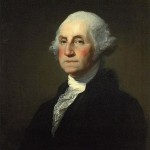
Upon their arrival in Cambridge the cannons were immediately deployed to fortify the Dorchester Heights recently taken by Washington. So commanding was the new battery over Boston harbor the British withdrew their fleet to Halifax. With the siege ended, Knox undertook the improvement of defenses in Connecticut, Rhode Island, and New York City in anticipation of British attack there. In New York he met Alexander Hamilton, commander of the local artillery. The two men formed a close friendship that lasted until Hamilton’s death in 1804. During his military service Knox also established a close friendship with fellow Massachusetts native Benjamin Lincoln. Henry Knox would go down in history as being one of the great strategists in this nation.
 The Revolutionary War is an interesting war in many ways, because while they were limited in the weapons of warfare, they still managed to wage war in a very effective way. Especially in that approximately 12,000 men were killed in action, and the number of men who died from disease, was far more than that. About all the soldiers had to fight with were cannons, and rifles…of the most antiquated sort. Nevertheless, they did the job…most of the time. The biggest problems included a lack of ammunition, and the weight of the cannons.
The Revolutionary War is an interesting war in many ways, because while they were limited in the weapons of warfare, they still managed to wage war in a very effective way. Especially in that approximately 12,000 men were killed in action, and the number of men who died from disease, was far more than that. About all the soldiers had to fight with were cannons, and rifles…of the most antiquated sort. Nevertheless, they did the job…most of the time. The biggest problems included a lack of ammunition, and the weight of the cannons.
The fighting was brutal, with wins and losses on both sides. After nearly a year of the backcountry conflict between Colonel William Washington, who was General George Washington’s second cousin once removed, and the British commander, Lieutenant Colonel Banastre Tarleton, who was infamous for Tarleton’s Quarter, the murder of colonial prisoners of war on May 29, 1780 at Waxhaws, Colonel Washington had retreated to North Carolina the previous October. Orders came from Brigadier General Daniel, commanding Washington to return to the South Carolina theater. Colonel Washington still lacked the proper artillery to properly fight off the Loyalists, who were under the command of Colonel Rowland Rugeley. 
On this day, December 4, 1780, a force of Continental dragoons commanded by Colonel Washington cornered Colonel Rugeley and his followers in Rugeley’s house and barn near Camden, South Carolina. He told his cavalrymen to dismount and surround the barn. While out of Rugeley’s sight, Washington’s men fabricated a pine log to resemble a cannon. This was a Quaker gun trick, named so because the Quakers used it to be intimidating without breaching their pacifist vow of non-violence, and for Colonel William Washington and his men, it worked beautifully. Washington faced the log cannon toward the buildings in which the Loyalists had barricaded themselves and threatened bombardment, if they did not surrender. Shortly after that, Rugeley surrendered his entire force without a single shot being fired. It was an amazing use of strategy, illusion, and forethought on the part of Colonel Washington, and quite likely saved the lives of many of his men.

When Lord Charles Cornwallis, commander of the British armies in America, was informed of the pacifist victory, he told Tarleton that Rugeley’s performance ensured he would never rise to the rank of brigadier general. I suppose Cornwallis thought that Tarleton’s men weren’t properly trained. A few weeks later, Tarleton would himself face an even worse humiliation at the hands of General Daniel Morgan during the devastating Battle of Cowpens. The brutal civil war for the hearts and minds of the Carolina backcountry had finally begun to favor the Patriots. Of course, as we now know, the final outcome would be victory and independence for the American Patriots.
 If you watch cop shows at all, you will know that if they are right, most crimes are solved…and in short order too. Of course, most of us realize that isn’t exactly the case. While I like to think most crimes are solved, there are still a great number of them that take years to solve and sometimes they remain unsolved indefinitely, if not forever. I suppose those would be the perfect crimes, but it is sad to think that a criminal gets away with a crime, no matter what it is. Such appears to be the case in the March 18, 1990 theft of 13 masterpieces worth $500 million from Boston’s Isabella Stewart Gardner Museum. The theft took place 26 years ago, and has never been solved, and the pieces are still missing.
If you watch cop shows at all, you will know that if they are right, most crimes are solved…and in short order too. Of course, most of us realize that isn’t exactly the case. While I like to think most crimes are solved, there are still a great number of them that take years to solve and sometimes they remain unsolved indefinitely, if not forever. I suppose those would be the perfect crimes, but it is sad to think that a criminal gets away with a crime, no matter what it is. Such appears to be the case in the March 18, 1990 theft of 13 masterpieces worth $500 million from Boston’s Isabella Stewart Gardner Museum. The theft took place 26 years ago, and has never been solved, and the pieces are still missing.
The museum was closed, and the night watchman, Richard Abath was on duty. Boston’s Saint Patrick’s Day revelers were finishing their last drinks before going home to sleep it off. Two police officers showed up at the door of the museum and rang the buzzer at 1:24 am. When the watchman opened the door, they informed him that they were there about the disturbance. The night watchman had been trained to first call Boston police headquarters to confirm officers’ names and badge numbers, but 23 year old Abath, who was an aspiring rock musician, and had given his notice days earlier, pressed a button to let the pair inside. The uniformed men ordered Abath to summon his fellow guard, 25 year old Randy Hestand, to the lobby.
When one of the officers said that Abath looked like someone they had a warrant out on, he broke protocol a second time when he left the desk, where the only panic button was, and obeyed their command to show them some identification. They handcuffed him and the arriving Hestand, who was filling in for a sick colleague and working the night shift for the first time. When both men were handcuffed, the men in police uniforms informed the guards, “This is a robbery, gentlemen.” Using duct tape, the intruders wrapped the guards like mummies, even covering Abath’s shoulder length curly hair and left them in the basement where they handcuffed Hestand to a sink and Abath to a workbench 40 yards away.
Then the thieves ransacked the museum, which had been a gift to the people of Boston in 1903, given by philanthropist, Isabella Stewart Gardner. Had they gone in and strategically taken valuable items, the robbery might have made sense, I suppose, but while they took $500 million worth of art, they also destroyed so much. They smashed gilded painting frames onto marble floors and sliced canvasses from their wooden backings. The robbers left an empty frame on the office chair of the museum’s security director and removed the recording tape from security system’s camera before departing 81 minutes after their arrival in a dark colored hatchback that disappeared into the night.
The two night watchmen were found the next morning, but the 13 pieces of artwork worth $500 million were gone. The most expensive piece was a painting titled “The Concert,” by Johannes Vermeer…one of only 36 known paintings by the Dutch master. The robbers got away with a sketch and two paintings by Rembrandt, including his only known seascape, “Storm on the Sea of Galilee.” They also took a Govaert Flinck landscape, Edouard Manet’s “Chez Tortoni,” five watercolors and sketches by Edgar Degas, a finial eagle that sat atop a Napoleonic flag that the thieves could not unscrew from the wall and an ancient Chinese vase. Strangely, the robbers had left untouched the museum’s most valuable painting, Titian’s “The Rape of Europa,” but an unwound coat hanger found near the candy machine suggested that they had also taken chocolate bars. It is suspected that the 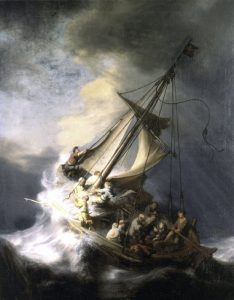 men were working off of a specific list of items contracted for in advance by a black market collector outside of the United States. Latin American drug cartels, Irish Republican Army militants and even Vatican operatives were floated as suspects. Suspicion also fell on notorious Boston mobster James “Whitey” Bulger, but he was searching for whomever committed the audacious crime on his home “turf” as well so that he could exact a cut. The FBI investigation into Abath, who was the only person tracked by motion sensors in the gallery from which the Manet was swiped, did not yield any answers.
men were working off of a specific list of items contracted for in advance by a black market collector outside of the United States. Latin American drug cartels, Irish Republican Army militants and even Vatican operatives were floated as suspects. Suspicion also fell on notorious Boston mobster James “Whitey” Bulger, but he was searching for whomever committed the audacious crime on his home “turf” as well so that he could exact a cut. The FBI investigation into Abath, who was the only person tracked by motion sensors in the gallery from which the Manet was swiped, did not yield any answers.
The case has grown cold, and unless some kind of new clues surface, it will likely remain unsolved. The frames that held the stolen paintings remain empty to this day, and still hang in the Isabella Stewart Gardner Museum, in the same places they were then…waiting for their lost painting to hopefully be returned someday. Time will tell.

